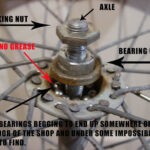20 Really Important Questions about Japanese Cars
Japanese cars are everywhere. But do you really know the most important things about them?
Today, as a Japanese car enthusiast, I will answer the most popular questions about cars from Japan.
1. Are Japanese Cars Reliable?
Japanese cars are among the most reliable cars in the world. According to most reliability rankings, Lexus is the most reliable automaker globally, while Toyota is the second most reliable car brand. In the top 10, there are also Honda, Subaru, and Mazda.
There are lots of reliability rankings. Each of them will show you different standings. To get to know the top 10 most reliable car brands, I decided to gather 9 different reliability rankings and calculate the average place of each car brand. Here’s what I found out.
Top 10 Most Reliable Automakers in the World:
1. Lexus (Reliability (9,56/10)
2. Toyota (Reliability (9,36/10)
3. Honda (Reliability (9,21/10)
4. Kia (Reliability (9/10)
5. Subaru (Reliability (8,75/10)
6. Hyundai (Reliability (8,57/10)
7. Porsche (Reliability (8,54/10)
8. Buick (Reliability (8,38/10)
9. Mazda (Reliability (8,09/10)
10. Skoda (Reliability (8,02/10)
In the ranking, there are 7 (!) automakers from Asia, 2 from Europe, and 1 from the US.
2. Are Japanese Cars Better than American Cars?
Japanese cars are better than Americans when it comes to reliability, safety, and affordability. However, American cars are generally more comfortable, more stylish, with more powerful engines to choose from.
Just like I stated earlier- Japanese cars are the kings when it comes to reliability. 5 automakers from Japan and only 1 from the US in the list of the top 10 most reliable car brands in the world. There is no hesitation in that field.
Also, Japanese cars are generally safer than Americans, because of more advanced safety features. However, the difference in this category isn’t so huge.
All Japanese automakers are more affordable than Americans. The Japanese parts are way cheaper, the engines are more economical, and are simply cheaper to purchase. Overall, Japanese cars are about 15% more affordable.
But American cars are great when it comes to comfort. Usually, their interiors are bigger and roomier. Japanese cars are worse, so you should make sure that you choose a sedan or SUV to drive comfortably.
Style is subjective, but most people think that Japanese cars don’t look really well. And I think it’s true- they look kind of old-fashioned, and their design is rather neutral. These cars just don’t pay people’s attention. American cars generally look better, with more interesting designs.
Engines? If you want to have a powerful car, you should get an American car like Jeep, Chevrolet, RAM, or Ford. They often come with V8-like engines that aren’t so obvious in Japanese automakers.
Read it: 5 Legit Reasons Why Honda Civic is so Popular
3. Are Japanese Cars the Best?
Overall, Japanese cars aren’t the best in the world. However, Japanese brands like Toyota, Honda, or Subaru are considered the best automakers in terms of reliability, build quality, and affordability.
There is no such thing as a perfect car brand. Every brand lack something.
Japanese cars are, of course really good, but for example, when it comes to technology and prestige, they lose their battle with German competitors like Mercedes-Benz, BMW, or Audi.
In terms of electric technology, Japanese brands also aren’t that great, and they are far away from Tesla.
If you talk about comfort, you can’t compare Honda to BMW or Toyota to Audi. European cars are on a way higher level.
Also, I mentioned that Japanese automakers don’t create the best-looking cars. To be honest, Japanese design loses with German, American, British, and French cars.
4. Are Japanese Cars Better than German Cars?
Japanese cars aren’t better than German cars. They’re better in reliability and affordability. However, German cars have better interior and exterior quality, better look, more powerful engines, more prestige, and more advanced technology.
Let’s compare Japanese and German cars and rate their specific features.
- Reliability Japan: 9/10, Germany 7/10
- Quality: Japan 7/10, Germany 9/10
- Design: Japan 6/10, Germany 10/10
- Safety: Japan: 8/10, Germany 8/10
- Engine power: Japan 7/10, Germany 8/10
- Affordability Japan 9/10, Germany 5/10
- Prestige: Japan: 5/10, Germany 10/10
- Technology: Japan 8/10, Germany 9/10
Total Points: Japan-Germany 61-66
As you can see, German cars are slightly better than Japanese cars if we consider 8 main categories.
You can read the more in-depth reliability comparison between Japanese and European cars in this post.
5. Are Japansese Cars Cheaper in Japan?
Japanese cars are cheaper in Japan by about 10%, mostly because of the lack of distribution costs.
Let’s see some examples.
| Car | Price in Japan | Price in the US |
|---|---|---|
| Toyota Camry | $21.880 | $24.500 |
| Honda Civic | $19.140 | $23.400 |
| Mazda 6 | $20.070 | $22.000 |
In most cases, you will find cheaper Japanese cars in Japan. However, it doesn’t apply to all cars. Because there is a huge amount of Japanese cars in the American market, you can also find cheap Toyotas, Honas, Subarus, or Mazdas in the USA.
6. Are Japanese Cars Expensive to Maintain?
Japanese cars are cheap to maintain. The cheapest Japanese brand is Toyota, which is simultaneously the third cheapest car brand to maintain globally.
According to avtotachki.com, the cheapest car brand to maintain in the US is Chrysler ($208 per year).
In the second place, there is Lincoln- $290/year.
In the third place, we have Toyota. It costs only $291 a year to maintain it. One place further, there is Mazda ($300/year).
In the sixth place, there is Nissan with $340 per year, and in the ninth place, we have Honda with $370.
The most expensive Japanese cars are Lexus- ($461 per year) and Infiniti ($508 per year).
7. Are Japanese Cars Popular in Europe?
Japanese cars aren’t that popular in Europe as in the US as their market share is only 5% (in the US 17%). However, some Toyotas like Toyota Yaris are more popular in particular countries.
The European car market is really competitive. There are lots of great brands here, and it’s not that easy to dominate the market.
Toyota, with its core values which are reliability and affordability, is popular in a few countries.
Trending Video: How to Easily Bring Back to Life any Old Car Battery and Save Tons of Money (click to watch)
When it comes to brand-new cars purchases, Toyota cars are the number one in:
- Poland (Toyota Corolla)
- Denmark (Toyota Yaris)
- Estonia (Toyota RAV4)
- Finland (Toyota Corolla)
- Greece (Toyota Yaris)
When it comes to the whole Europe, the most popular Japanese car here is Toyota Yaris, which is sold about 200.000 times per year. According to autocar.co.uk, it makes this car the sixth most popular car in Europe.
8. Are Japanese Cars Safe?
Japanese cars are one of the safest cars in the world. According to The Insurance Institute for Highway Safety, there are 28 Japanese cars out of 68 vehicles in the ranking of “Top Safety Pick Plus.”
Every year, The Insurance Institute for Highway Safety picks the safest cars of the year. The rules are simple.
“To be a “Top Safety Pick Plus,” vehicles must get the top score in all five of the group’s crash tests. Winners must also offer advanced front crash-prevention systems with automatic emergency braking. The institute says several vehicles added automatic braking in 2021 so they could compete for the top prize, including the Nissan Maxima and Toyota Avalon.“
In 2021, more than 1/3 of the vehicles that were listed in the top 68 came from Japan.
In the category of small cars, there were 4/4 cars from Japan (2 Mazdas, Subaru, and Honda).
Midsize cars: 7/8 cars from Japan (2 Nissans, 2 Subarus, Honda, Mazda, Toyota)
Midsize luxury cars- 3/9 (2 Lexus, Acura)
Large cars: 0/1
Large luxury cars: 0/11
Small SUVs: 5/9 (3 Mazdas, Subaru, Nissan)
Midsize SUVs: 4/6 (Mazda, Nissan, Subaru, Toyota)
Midsize luxury SUVs: 3/13 (2 Acuras, Lexus)
Large SUVs: 0/2
Minivans: (2/2) (Toyota, Honda)
You can see the specific models and winners from the last years by clicking here.
9. Are Japanese Cars Made in America?
There are Japanese car factories in the whole world, including America. The main automakers that have their assembly plants are Honda, Toyota, and Lexus.
| Manufacturer | Models | Location |
|---|---|---|
| Honda | CR-V Acura RDX Acura MDX | East Liberty, Ohio, USA |
| Honda | Civic CR-V Insight | Greensburg, Indiana, USA |
| Honda | Odyssey Pilot Passport Ridgeline J Engine | Lincoln, Alabama, USA |
| Honda | Acura NSX Accord Accord Hybrid CR-V Acura TLX Acura ILX | Marysville, Ohio, USA |
| Toyota | Sienna Sequoia Highlander | Princetown, Indiana, USA |
| Toyota | RAV4 Hybrid Camry Avalon | Georgetown, Kentucky, USA |
| Toyota | Tacoma Tundra | San Antonio, Texas, USA |
| Toyota | Corolla | Blue Springs, Mississippi, USA |
| Lexus | ES | Lexington, Kentucky, USA |
Let me tell you some facts about manufacturing Japanese cars in the USA.
- Honda’s manufacturing plants in the USA produce 5 million products annually.
- Honda’s U.S. plants manufactured more than two-thirds of the Honda and Acura vehicles sol in America in 2020.
- Seven of the top 20 vehicles in the 2020 American-Made Index are produced by Honda.
For example, you can read in this article where particular Honda models are made.
10. What Japanese Cars are Rear Wheel Drive?
Most Japanese cars are front-wheel drive, but there are also vehicles with 4WD.
Japanese cars with rear-wheel drive:
1. Mazda Miata
2. Nissan 350Z
3. Honda S2000
4. Lexus IS220
5. Lexus IS 200t
6. Toyota GT86
7. Mazda RX-8
8. Toyota MR2
9. Mitsubishi Starion
10. Nissan 240SX
11. Toyota MR2
12. Toyota Supra
13. Toyota GT86
14. Toyota Cressida
15. Toyota Tundra
16. Suzuki Cappuccino
17. Toyota Celica
18. Honda E Advance
19. Subaru BRZ
20. Lexus GS 300h
21. Lexus GS 450h
22. Suzuki Jimny
11. Why are Japanese Cars Cheap?
Japanese cars are cheap because of the economy of scale, smaller engines compared to German or American cars and lower quality of interior elements.
The first reason why Japanese cars are cheap is the economy of scale. In short, it works like this. The more vehicles a Japanese company makes, the price per unit will be lower. Because companies like Honda produce more than 4 million vehicles per year, it’s relatively easy for them to sell their cars at lower prices than competitors.
Also, Japanese cars like Toyota or Mazda tend to make small, economical engines that are cheaper to produce and use. In comparison, their American or German competitors use engines like V8 or V6 that are powerful but expensive.
If you get into Japanese cars, even when it’s Lexus, you might feel that the quality of elements isn’t too high. It’s good enough, but if you get into BMW or Audi, you will have a completely different feeling. In Japanese cars, you will find lots of plastic or fiberglass. In German cars, there is plastic too, but you can also find metal or even wood. Also, it’s not that obvious to find a Japanese car with real leather seats, while in other luxury brands, it’s a norm.
As a result, Japanese cars are even up to 30% cheaper than their competitors.
12. What was the First Japanese Car Company?
The first Japanese car company was DAIHATSU Daihatsu Motor Co., Ltd., mostly known for its range of smaller models and off-road vehicles. When it comes to the most popular Japanese companies, the oldest one is Mitsubishi, which was created in 1870.
Let’s take a look at the oldest Japanese car companies.
- Mitsubishi- 1870
- Suzuki- 1909
- Mazda 1920
- Nissan- 1933
- Toyota- 1937
- Honda- 1948
- Subaru- 1953
- Acura- 1986
- Infiniti- 1989
- Lexus- 1989
13. What are Japanese Cars Known for?
Japanese cars are known for their affordability, reliability, and advanced safety features.
14. Why do Japanese Engines Last Long?
Japanese engines last long because they have a less complex structure with fewer elements which decreases the chance of breaking down. It means their performance isn’t that great, but they make it up with great economy and reliability.
According to Warranty Direct, Japanese automakers make the best engines. Just take a look at the top 10 most reliable engines producers.
1. Honda (failure rate: 1 in 344)
2. Toyota (failure rate: 1 in 171)
3. Mercedes-Benz (failure rate: 1 in 119)
4. Volvo (failure rate: 1 in 111)
5. Jaguar (failure rate: 1 in 103)
6. Lexus (failure rate: 1 in 101)
7. Fiat (failure rate: 1 in 85)
8. Ford (failure rate: 1 in 80)
9. Nissan (failure rate: 1 in 76)
10. Land Rover (failure rate: 1 in 72)
One of the best engines of Japanese producers are 2JZ-GTE Inline-Six, 3S-GTE Inline-Four, R36V V-8, VQ35DE V6, KA24DE Inline-4.
15. Are Japanese Car Parts Cheap?
Japanese car parts are considered cheap. The more popular car you have, the cheaper parts will be. For example, Toyota Corolla, Honda Civic, or Mazda 6 parts are cheap, but Toyota 86 or Celica are more expensive.
Motor1.com created a list of the cheapest cars to repair and maintain. On the list, 8 out of 10 vehicles come from Japan.
The cheapest car to maintain is Toyota Corolla- $341/year. Honda Accord is the second cheapest car- $351 a year. In the top 3, there is also Toyota Avalon which costs $388 a year to maintain.
If you want to buy an SUV, you should pick Honda CR-V that costs only $385 to maintain. If you’re looking for something bigger, consider Nissan Pathfinder ($406 a year).
The affordability king when it comes to minivans is Honda Odyssey ($403 per year). Toyota Tacoma is the cheapest in the segment of midsize pickup trucks- $398/year.
To summarize, if you want to have a cheap car to maintain, buy a popular Japanese car.
Most popular Suzuki parts and their prices are listed in this post.
16. Do Japanese Cars Have VIN Numbers?
Japanese automakers do not use a Vehicle Identification Number as is common in the United States and Europe. Instead, Japan uses a Frame Number, 9 to 12 alphanumeric characters identifying model and serial number.
Chassis number (Frame) can be found on the manufacturer build plate, which is usually located on the left or right side of the firewall of your car once you lift the bonnet. In Japan, the chassis code is usually called “Chassis No.” or “Frame No.” and its length depends on make and model.
However, you can check the history of a car from Japan on the websites like japancarhistorycheck.com.
17. Do Japanese Cars Rust?
Some Japanese cars tend to rust, some don’t. Cars that tend to rust are Toyota RAV4, Nissan Altima, or Mazda 3. Japanese cars that never rust are Lexus LS, Honda Civic, and Toyota Camry.
Other Japanese cars that rust often are:
- Toyota Tacoma (2005-2010)
- Honda Accord (2002-2008)
- Mazda 6 (2007-2013)
- Nissan Navara (2005-2014)
- Suzuki Grand Vitara (2005-2014)
- Subaru Forester (2002-2008)
On the other hand, there are Japanese cars that don’t have problems with rust:
- Nissan Quashqai
- Toyota Avensis
- Toyota Camry
- Toyota Corolla
- Honda Civic
- Lexus LS
- Toyota Yaris
18. Do Japanese Cars Have Catalytic Converters?
A catalytic converter is a mandatory equipment for every car. Japanese cars aren’t an exception, and they all use catalytic converters. However, their placements aren’t that obvious.
In some cars, it’s not so easy to notice a catalytic converter. For example, some Honda vehicles have positioned the catalytic converter within the engine bay to make theft more difficult.
In some Toyotas, you can find a catalytic converter 3 to 4 feet behind the muffler and approximately 1 foot behind the engine.
19. Why Do Japanese Cars Have Low Mileage?
Japanese used cars have low mileage because of the Japanese driving culture. Japanese don’t use their cars too often, and they drive mostly in the city. In Japan, cars over 60.000 miles are considered old.
20. Why Do Japanese Cars Have Mirrors on Fenders?
Japanese cars have mirrors on fenders because of safety reasons. Fender mirrors eliminate typical C-pillar blind spots and allow the driver to focus their eyes on the road without having to refer to door-mounted mirrors in order to see what’s going on at the flanks and rear of the car.






